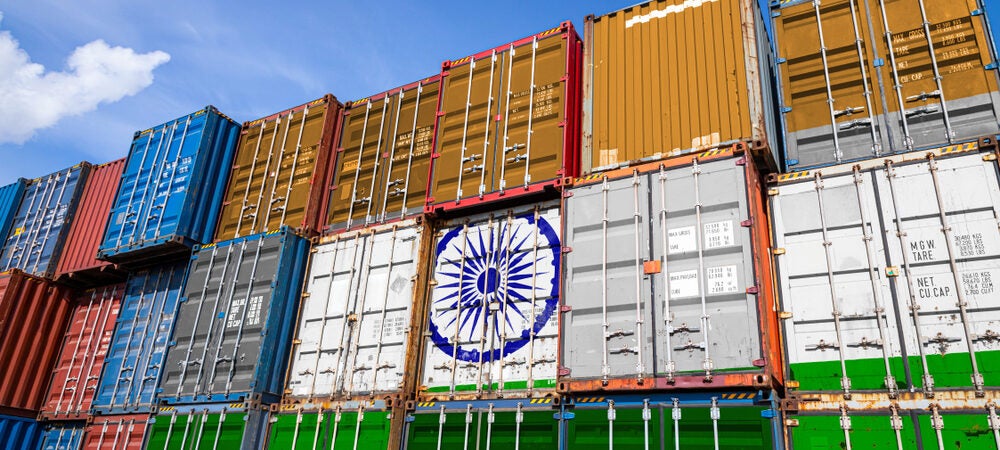In response to the significant supply chain disruptions accompanying the last three (pandemic-ridden) years, manufacturers across the globe have undertaken strategies to diversify their supply sources. During these years of uncertainty, India has catapulted itself into becoming a strong trading partner for several countries and multinational companies on the back of a stable economy, prospects for growth, a vast consumer base, and natural resources.
India’s new Foreign Trade Policy, 2023, capitalises on these opportunities and sets ambitious aspirations for the country’s role in the global market. The Indian government appears to be performing a delicate balancing act between meeting its obligations under the WTO and achieving its target of exporting goods and services worth USD 2 trillion by 2030. At the launch of the FTP, the Indian government stressed the WTO compatibility of the new policies. At the same time, sections of the FTP either incorporate export incentives from previous policies or allude to the introduction of new export-boosting programmes. Given this context, this article examines some of the questions that may arise out of India’s new FTP (with a focus on subsidies) given its commitments under the WTO.
What Are India’s Commitments Under The WTO
The General Agreement on Tariffs and Trade is the primary multilateral agreement relating to international trade in goods under the WTO. Among other features, the GATT empowers members to impose countervailing duties on imports made from another member, including India, if the government provides trade-distorting subsidies to its exporters. This provision is supplemented by the Agreement on Subsidies and Countervailing Measures.
The ASCM distinguishes between ‘prohibited’ and ‘countervailable’ subsidies. Subsidies that are based on local content manufacturing or are contingent on exports are prohibited under the ASCM. Other subsidies are not strictly prohibited under the ASCM but may be subject to being countervailed by other members by way of an anti-subsidy duty.
How Does The FTP Weigh Against India’s WTO Obligations
With the current iteration of the FTP, India has switched from an incentive-based regime to a remission-based one, as Minister of Commerce and Industry Piyush Goyal highlighted. Simply put, remission of local taxes is permissible under the ASCM since it only prevents exporters from exporting local taxes by refunding such taxes upon export. Accordingly, in line with its 2020 decision, the FTP has replaced the MEIS with the Remission of Duties and Taxes on Exported Products. Since the RoDTEP Scheme merely refunds domestic taxes imposed on goods upon export, a plain reading of the scheme suggests that it is neither countervailing nor prohibited under the ASCM.
Retains Subject That Has Been WTO Disputes Against India
The Indian government has retained schemes such as Duty Free Import Authorisation, Export Promotion of Capital Goods Scheme, and Export Oriented Units in the new FTP. In 2018, the United States filed a complaint with the WTO against certain Indian trade policies. It was alleged that programmes such as the ones listed above are export subsidies and are therefore prohibited under the Agreement on Subsidies and Countervailing Measures.
Introduction Of Other Potential Subsidies
The FTP also allows authorities to support local industries in specific districts to boost manufacturing and exports of selected priority products and services. The details of the support available to the exporters will become clearer once the respective District Export Promotion Committees formulate their plans. Relevant authorities will likely shape the nuances of such programmes with due consideration to India’s obligations under the WTO. From past experience, Indian lawmakers will be well advised to bear in mind that supporting manufacturing contingent on the use of local content or export orientation could result in the programme being challenged under the ASCM as ‘prohibited’.
Previously Countervailed Indian Programmes
Additionally, the FTP has proposed changes that are likely to impact how investigating authorities across the globe calculate the benefit conferred on Indian exporters under certain programmes that have historically been countervailed in anti-subsidy investigations against India.
For example, exporters may now self-ratify ‘additional inputs’ for products for which Standard Input Output Norms have been notified without the intervention of the Norms Committees and seek an advance authorisation for the same. This may further impact an investigating authority’s assessment of whether India has a reasonable and effective system in place to confirm which inputs and in what amounts are consumed in the exported products. Similarly, it would be interesting to see whether the waiver on the export obligation default under the Amnesty Scheme15 would impact benefit calculation in any potential anti-subsidy investigations against Indian exporters.
In conclusion, India’s new Foreign Trade Policy, 2023, clearly reflects India’s aspirations to play a more prominent role in the global supply chain. The FTP has provided Indian regulatory authorities with the framework to boost exports while maintaining compliance with its WTO obligations. As the Indian economy continues to grow in the context of the global value chain, it will be important for the Indian government to be mindful of its obligations under the WTO and work towards finding a balance between its development goals and international trade commitments.
Ambarish Sathianathan is partner and Divyashree Suri is associate at Economic Laws Practice.
To read the full article, please click here.

